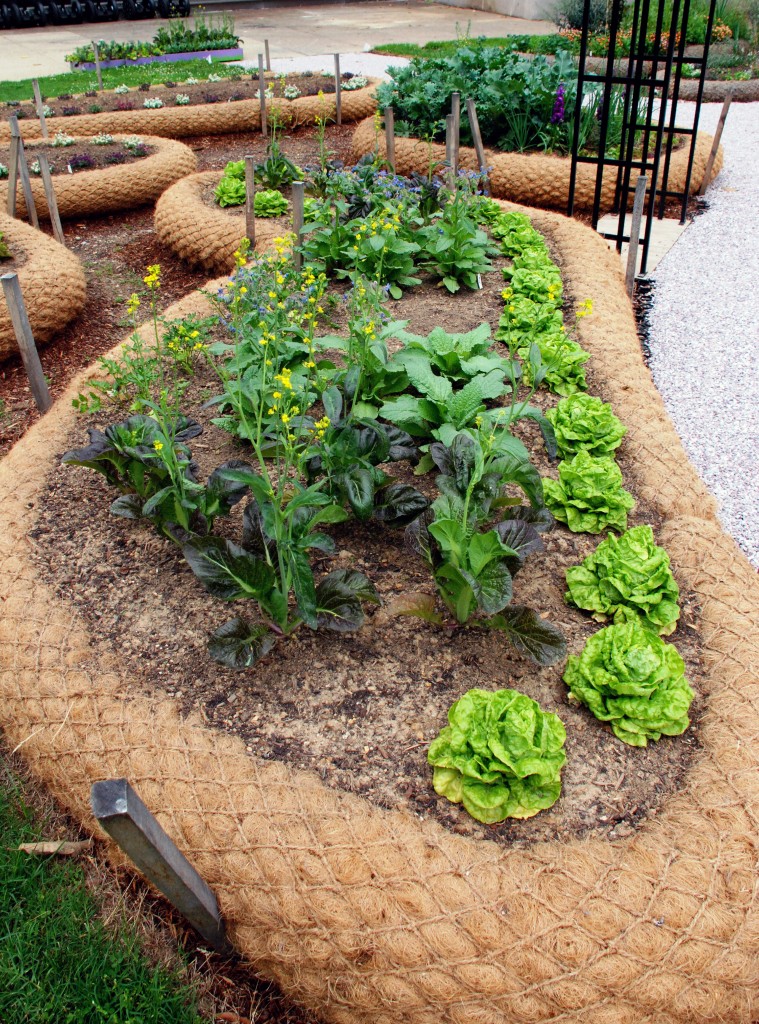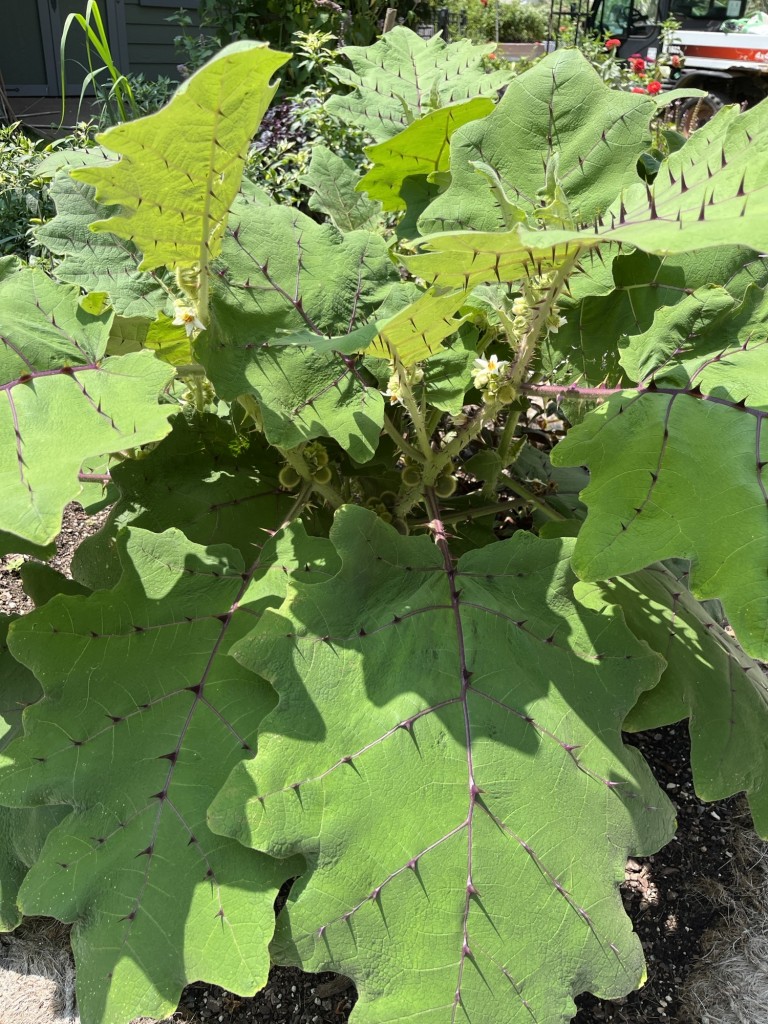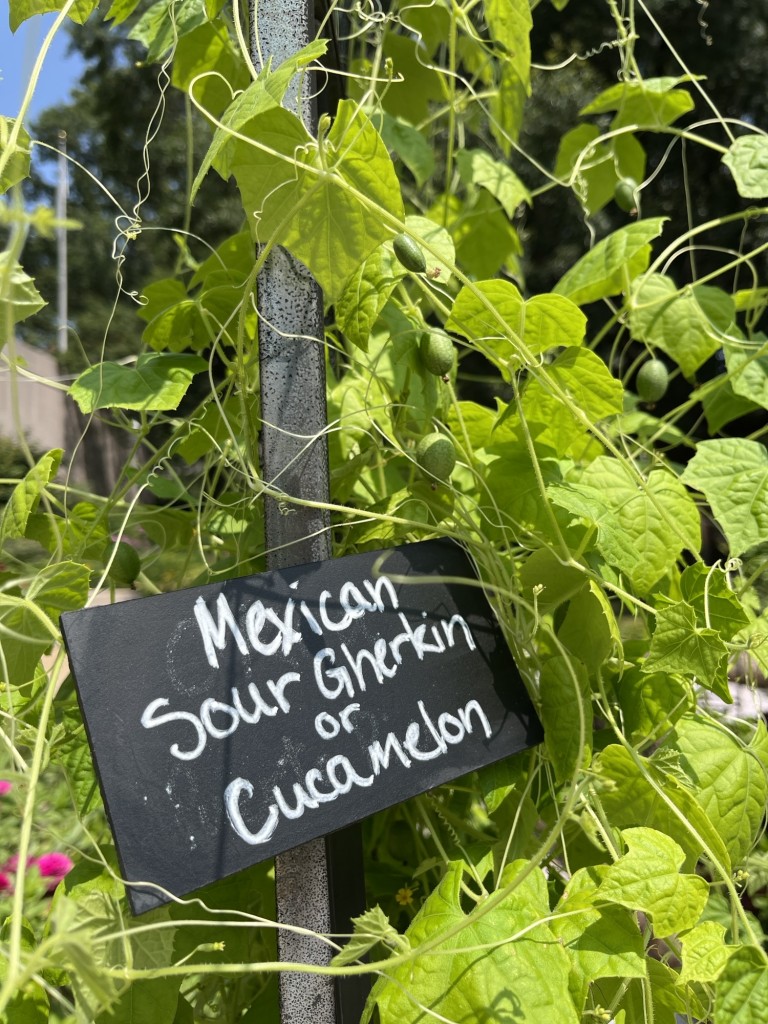The Victory Garden
The Victory Garden at Smithsonian Gardens is a demonstration vegetable garden located on the east side of the National Museum of American History. It is used by our gardening staff to interpret the Victory Garden trend that was popular during World War II (1941-1945). During that time, millions of victory gardens in all shapes and sizes in the United States produced food for the folks at home.
Victory Gardens actually got their start during World War I. With the advent of U.S. involvement in that war (1817-1918), the federal government established the U.S. National War Garden Commission. The commission produced eye-catching posters and leaflets on the basics of how to garden, what to plant, and what fertilizers to use. It distributed seed packets, both here and abroad to our allies. The commission also helped implement regular nation-wide meat-less and wheat-less days in order to conserve those commodities and distributed recipes to encourage the public to provide meal alternatives to their families.

During both wars, the Victory Garden effort served as an effective tool in boosting morale, communicating patriotism, protecting against food shortages at home, and reducing demands on commercial farms as they supplied food to the troops overseas. During the war, rationed foods included canned fruits and vegetables; victory gardens help to fill this gap. They took the place of once prized flower beds, lawns, and window boxes at private homes and in public parks, school yards, vacant lots, and even the edges of baseball diamonds.

In the Washington, D.C. area we have three dependable growing seasons, with many cool-season plants that can grow well in fall and sometimes overwinter. In the Smithsonian’s Victory Garden, we grow cool-season crops like lettuce, broccoli, kale, and peas in early spring and in the fall. Lettuce, mustard, kale and other greens can be harvested during the fall and may even survive a mild winter. Perennial herbs like sage, hardy rosemary, lavender, thyme and anise hyssop have been in our Victory Garden for years. The plantings in this garden are rotated seasonally to illustrate how a wide variety of vegetables can be grown in a relatively small space.
Around Mother’s Day we typically harvest the cool spring veggies and plant summer crops including a wide variety of sun-loving plants like cucumber, squash, okra, tomatoes, eggplants, tea hibiscus, peppers, tomatillos and herbs like basil and the toothache plant. Our Victory Garden also features two varieties of hops that produce about 15 pounds of hops annually. Working with museum curators at the National Museum of American History and the Smithsonian’s American Brewing History Initiative, Smithsonian Gardens harvests these hops and makes them available to a local brewer.
Considerable effort is made to incorporate plantings around the perimeter of the garden and amongst the vegetable that encourage and support pollinators. These pollinators are vital to grow vegetables successfully. Pollen- and nectar-producing plants near edible crops provide consistent habitat and food for pollinators such as bees, flies, butterflies, and hummingbirds. Good pollinator plants to use in and around vegetable gardens include members of the Aster family like goldenrods and asters (good for late season pollination), and coneflowers, sunflowers and black-eyed Susan for summer pollination. Members of the Mint family such as beebalm and anise hyssop, and plants in the Dill or Parsley families are also useful. Many of the members of these three plant families attract a wide variety of beneficial insects and are commonly available from plant suppliers.
Victory gardens enabled agricultural and transportation businesses to focus their efforts on getting food to the troops overseas. In 1942, roughly 15 million families planted victory gardens; by 1944, an estimated 20 million victory gardens produced roughly 8 million tons of food–the equivalent of more than 40 percent of all the fresh fruits and vegetables consumed in the United States at that time. The Smithsonian’s Victory Garden helps to tell the story of the impact of these relatively modest garden plots and the patriotism, teamwork and sacrifice that made them possible.
To celebrate the recent establishment of the Smithsonian’s National Museum of the American Latino, the Smithsonian horticulturists who maintain the Victory Garden have been trying to incorporate more plants of South and Central American origin. We hope you will visit the garden to see some of these plants profiled below, especially as we approach National Hispanic Heritage Month!

Solanum quitoense (Naranjilla)
Considered to be the “nectar of the gods,” this popular fruit originated in temperate regions of the Andes Mountains. It is a member of the nightshade family which also includes tomatoes, eggplants, and potatoes. Since it bruises easily when ripe, it is often not grown on a commercial scale. However, it is commonly used for fruit juice and can also be eaten raw, cooked, or fermented. Some describe its flavor as a combination of kiwi, citrus, and pineapple. Check out recipes like Lulada for a fun way to use this fruit. Be careful when handling it! Our horticulturists have learned that the spines can nick you even through garden gloves! These plants can be found in several of the beds at the Victory Garden as well as at the National Museum of the American Indian and the Mary Livingston Ripley Garden.

Melothria scabra (Cucumber “Mexican Sour Gherkin”)
Also known as the cucamelon, mouse melon, pepquiños, or sandita (little watermelon), this plant is native to Mexico and other parts of Central America. While neither a cucumber nor a melon, it resembles both! This fruit was part of the pre-Columbian Aztec diet. It can be eaten raw, pickled, or cooked. The plants like to spread so be mindful where you place them. They are found in three different locations in the Victory Garden, but our favorites are the ones growing up the trellis opposite the hops arch. Don’t confuse this plant for Melothria pendula, the Guadeloupe cucumber which looks similar but is purple when ripe and works like a laxative!

Tithonia rotundifolia ‘Fiesta del sol’ (Mexican Sunflower)
This is the first dwarf cultivar of Tithonia rotundifolia. Usually quite tall and gangly at 4 to 6 feet in length, this cultivar maxes out at around 3 feet. A member of the Asteraceae family which most of us know for the daisy, Tithonia are native to Mexico and Central America. Bright orange flowers are produced early and last all summer long; they attract pollinators of all sorts such as bees, butterflies, and even hummingbirds. Currently these can be seen along the edge of the center circle bed in the Victory Garden. This cultivar received an All-America Selections award in 2000.

